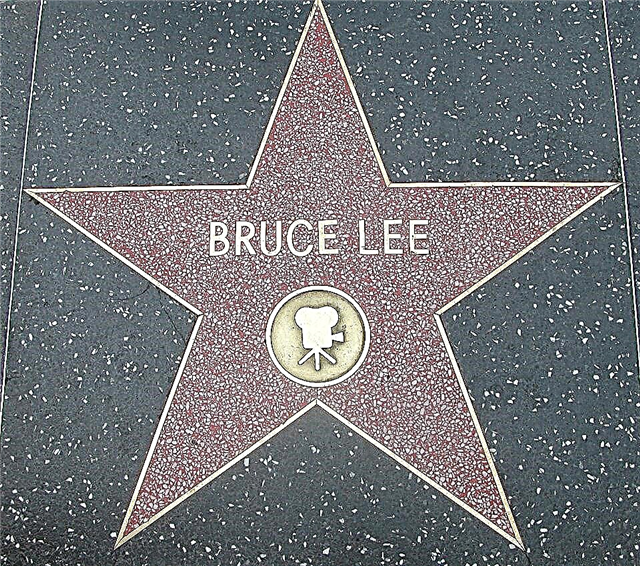Shakyamuni Buddha (literally "Awakened sage from the Shakya clan"; 563-483 BC) - a spiritual teacher and founder of Buddhism - one of the 3 world religions. Having received a name at birth Siddhattha Gotama/Siddhartha Gautama, later became known as Buddha, which literally means "the Awakened One" in Sanskrit.
Siddhattha Gautama is a major figure in Buddhism. His stories, sayings and conversations with followers formed the basis of the canonical collections of sacred Buddhist texts. Also enjoys authority in other religions, including Hinduism.

There are many interesting facts in the biography of Buddha, which we will talk about in this article.
So, before you is a short biography of Siddhartha Gautama.
Biography of Buddha
Siddhartha Gautama (Buddha) was born around 563 BC. (according to other sources in 623 BC) in the city of Lumbine, which is now located in Nepal.
At the moment, scientists do not have a sufficient number of documents that would allow to recreate the true biography of Buddha. For this reason, the classical biography is based on Buddhist texts that arose only 400 years after his death.
Childhood and youth
It is believed that the Buddha's father was Raja Shuddhodana, while his mother was Queen Mahamaya, a princess from the kingdom of the Colia. A number of sources say that the mother of the future teacher died a week after giving birth.
As a result, Gautama was brought up by his own maternal aunt Maha Prajapati. Curiously, Maha was also the wife of Shuddhodana.

Buddha had no siblings. However, he had a half-brother, Nanda, the son of Prajapati and Shuddhodana. There is a version that he also had a half-sister named Sundara-Nanda.
Buddha's father wanted his son to become a great ruler. For this, he decided to protect the boy from all religious teachings and knowledge about the suffering that befall people. The man built 3 palaces for his son, where he could enjoy any benefits.
Even as a child, Gautama began to show different abilities, as a result of which he was significantly ahead of his peers in the study of science and sports. At the same time, he devoted much time to reflection.
When the young man was 16 years old, his father gave him to wife Princess Yashodhara, who was his cousin. Later, the couple had a boy, Rahul. The first 29 years of his biography, Buddha lived in the status of Prince Kapilavastu.
Despite the fact that Siddhartha lived in full prosperity, he understood that material wealth is not the main meaning in life. Once, the guy managed to leave the palace and see with his own eyes the life of ordinary people.
Buddha saw "4 spectacles" that forever changed his life and attitude to it:
- a beggar old man;
- a sick person;
- decaying corpse;
- hermit.
It was then that Siddhartha Gautama realized the harsh reality of life. It became clear to him that wealth was not able to save a person from disease, aging and death. Then he realized that the path of self-knowledge is the only way to comprehend the causes of suffering.
After that, Buddha left the palace, family and all the acquired property, going in search of a way to be freed from suffering.
Awakening and preaching
Once outside the city, Gautama met a beggar, changing clothes with him. He began to wander in different regions, begging for alms from passers-by.
When the ruler of Bimbisara learned about the wanderings of the prince, he offered the throne to Buddha, but he refused it. During his travels, the guy studied meditation, and also was a student of various teachers, which allowed him to gain knowledge and experience.

Wanting to achieve enlightenment, Siddhartha began to lead an extremely ascetic lifestyle, enslaving any desires of the flesh. After about 6 years, being on the verge of death, he realized that asceticism does not lead to enlightenment, but only drains the flesh.
Then the Buddha, all alone, continued his journey, continuing to seek ways to achieve spiritual awakening. Once he found himself in a grove located in the visible vicinity of Gaia.
Here he satisfied his hunger with rice, which was treated to him by a local woman. An interesting fact is that the Buddha was so physically exhausted that the woman mistook him for a tree spirit. After eating, he sat down under a ficus tree and vowed that he would not move until he reached the Truth.
As a result, the 36-year-old Buddha allegedly sat under a tree for 49 days, after which he managed to achieve Awakening and a complete understanding of the nature and cause of suffering. It also became clear to him how to get rid of suffering.
Later this knowledge became known as the "Four Noble Truths." The main condition for Awakening was the attainment of nirvana. It was after this that Gautama began to be called "Buddha", that is, "The Awakened One." In the subsequent years of his biography, he preached his teaching to all people.
For the remaining 45 years of his life, Buddha preached in India. By that time, he had a lot of followers. According to Buddhist texts, then he performed various miracles.

People in droves came to Buddha to learn about the new teaching. An interesting fact is that the ruler of Bimbisara also accepted the ideas of Buddhism. Learning about the imminent death of his own father, Gautama went to him. As a result, the son told his father about his enlightenment, as a result of which he became an arhat shortly before his own death.
It is curious that over the years of his biography, Buddha was repeatedly subjected to attempts on his life by opposition religious groups.
Death
At the age of 80, Buddha declared that he would attain absolute Peace in speed - nirvana, which is not “death” or “immortality” and is beyond the comprehension of the mind.
Before his death, the teacher said the following: “All composite things are short-lived. Strive for your release, making every effort for this. " Gautama Buddha died in 483 BC, or 543 BC, at the age of 80, after which his body was cremated.
The relics of Gautama were divided into 8 parts, and then laid at the base of specially built stupas. It is curious that in Sri Lanka there is a place where the Buddha's tooth is kept. At least Buddhists believe that.









